Coronavirus Today: What we’re looking forward to
- Share via
Good evening. We’re Thuc Nhi Nguyen and Sam Schulz, and it’s Friday, March 12. Here’s the latest on what’s happening with the coronavirus, plus ways to spend your weekend and a look at some of the week’s best stories.
We asked you, our readers, what you’re most looking forward to once you and your loved ones are vaccinated. We’re grateful to you for sharing; what you wrote offers a window into the hopes and joys that have been sustaining so many Californians since this pandemic began.
We’re looking forward to eating in restaurants — Ivan Limon at his favorite Korean barbecue spots, and Jessica Taylor at Meals by Genet, her family’s favorite restaurant in L.A.
After California officially met its goal Friday of administering 2 million doses of vaccine in its hardest-hit communities, these hopes can soon be realized in counties like Los Angeles, Orange and San Bernardino, which are moving into the red tier. Restaurants are some of the numerous establishments that can reopen for indoor dining in L.A. Monday, though officials warn that indoor dining remains risky and urge caution.
We’re looking forward to travel, and opportunities to get to know new people in new places — whether on the road headed cross-country, as Amy Walker is eager to do, or around the world, as Susan Ray and Anne Sirota are.
We’re looking forward to socializing — whether we’re hosting barbecues, as Adell Lopez and Raymond Ballesteros are eager to do, or ditching Zoom for a long-overdue book club meeting in the flesh, as Irene Gutierrez wants. But after so long isolated, we may not be too picky about the activity, as Tom Guff suggests: “I’m going to start constantly showing up at every friend and family member’s place to hang out.”
And more than anything, we can’t wait to see family — to play with grandkids, yes, but also to reconcile properly with loved ones we fell out with before the pandemic struck. Ronny Gross especially looks forward to hugging her mom, who recently turned 101. And Susan Tarka Sanchez most looks forward to looking in her parents’ eyes — her mom’s lighting up when she watches Warriors games on TV, her dad’s when he plays his bass drum in the marching band.
Hugs were a big theme in your emails to us — “long, tight hugs,” in Kammy Sislofsky’s words. As Janet Pielke wrote, the isolation can take a toll, especially on those who live alone — and huggers especially, noted Reidel Post, miss the touch and expression. As Anna Friedman succinctly described what she’s most looking forward to: “HUGS!! HUGS!! HUGS!! HUGS!! HUGS!! HUGS!! HUGS!! HUGS!! HUGS!! X 1000!!”
Many of us even miss the mundane errands that once felt like a chore — haircuts, getting new eyeglasses and just picking out our own groceries, even those of us whose kids kids have gotten good at it, as Mona Goldstein’s have. We even look forward to conversations struck up waiting in line for the bathroom.
And we miss the arts. Margot Webb misses the opera. Albert Lusk misses the movies. Deborah Jensen misses museums. Henrietta Carter misses singing. Gary Haven misses concerts, plays and most of all the Latin drag review his husband produces at Toucan’s Tiki Lounge in Palm Springs.
Mary Burrows may have spoken for many L.A. arts lovers when she wrote: “A simple trip to see a movie. Attending live stage performances. An amble through a museum. Those three activities will be enough to keep me very happy and flourishing.”
How about you? Email us with what you’re most looking forward to, and we may feature it in a future newsletter too.
By the numbers
California cases and deaths as of 5:30 p.m. on Friday:

Track California’s coronavirus spread and vaccination efforts — including the latest numbers and how they break down — with our graphics.
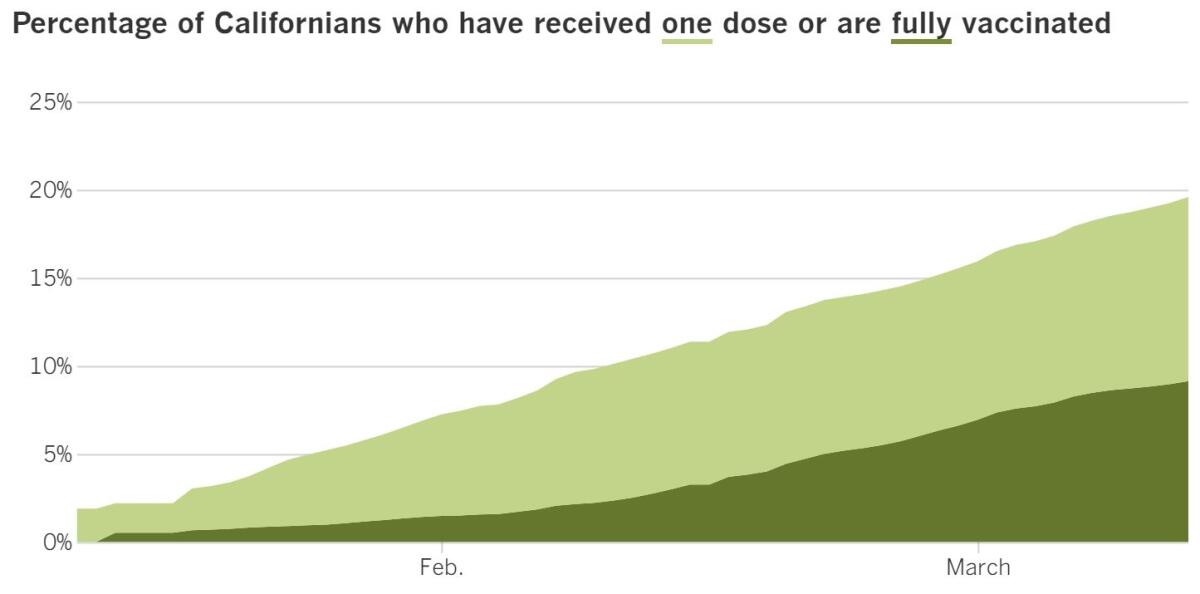
See the current status of California’s reopening, county by county, with our tracker.
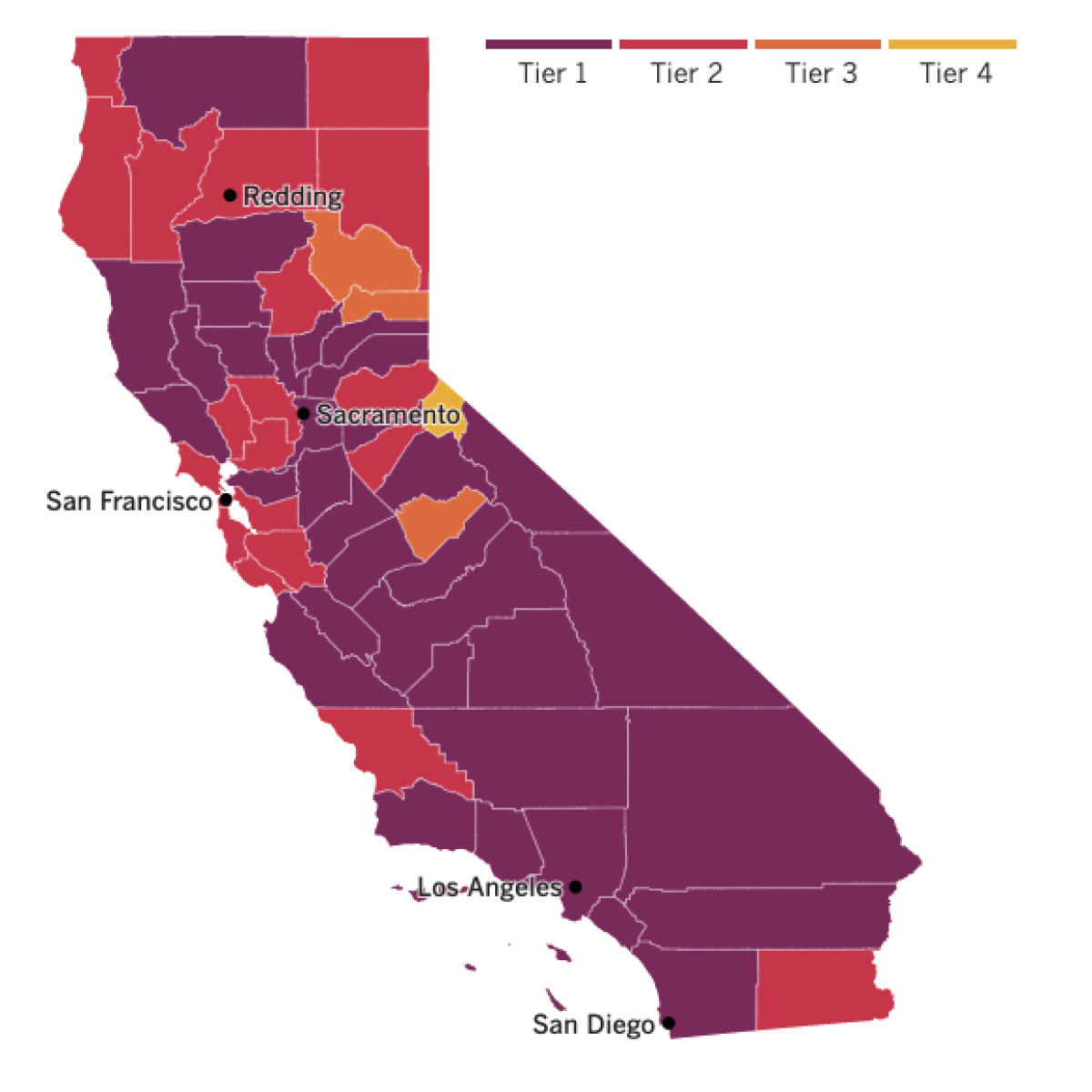

What to read this weekend
Doctors throw a Hail Mary
Ventilators have been a lifeline for the sickest COVID-19 patients, but when it wasn’t enough to help Blanca Lopez pull in enough oxygen, her doctors took it one step further, my colleague Thomas Curwen reports.
Lopez’s last resort was a medical device known as ECMO, short for extra-corporeal membrane oxygenation. It’s like dialysis for the lungs, except riskier: Of the 39 COVID-19 patients put on ECMO at UCLA, 15 recovered and were discharged, 12 died, eight are still on the machine and four remain in the hospital.
Lopez spent 14 weeks in two hospitals, including 51 days in intensive care. She was put on ECMO twice. Her 18-year-old son Criztiaan felt his dream for the future fade. “You’re going to get through this,” he told her at her bedside, but he had his doubts looking at the tubes filled with her blood.
The treatment took a toll on her medical team too. “It is hard on patient and staff to care for someone who is so ill,” said Dr. Vadim Gudenzko, an intensivist at UCLA. “It is emotionally draining, but if you can get someone like Blanca back to her family ... then it is worth it.”
A well-earned return
Football is more than a game for 17-year-old Josh Morales. It’s freedom. It’s relief. It’s a way for the Loyola High senior to show everyone that after nursing his parents through COVID-19 while also battling the disease himself, he’s still strong, columnist Bill Plaschke writes.
Morales’ father Antonio was hospitalized for 38 days after all three members of his family fell ill last December. His mother Betty was bedridden for three weeks. Morales, feverish and aching, cooked meals, delivered medicine and did laundry. “My son, he becomes the air that we breathed,” Betty said.
On the rare occasion that both of his parents were resting and he was feeling strong enough, Morales tossed a small football in the air as he lay in his bed dreaming of getting back on the field.
Get our high school sports newsletter
Prep Rally is devoted to the SoCal high school sports experience, bringing you scores, stories and a behind-the-scenes look at what makes prep sports so popular.
You may occasionally receive promotional content from the Los Angeles Times.
High school football games will return this weekend after a 15-month absence, though attendance will be limited to two immediate family members per athlete. There will only be five official games for Loyola with no playoffs or championship at the end.
After that, Morales’ football career will be over. He is on track to graduate with a 3.7 GPA with hopes of studying engineering and becoming the first member of his family to earn a four-year college degree.
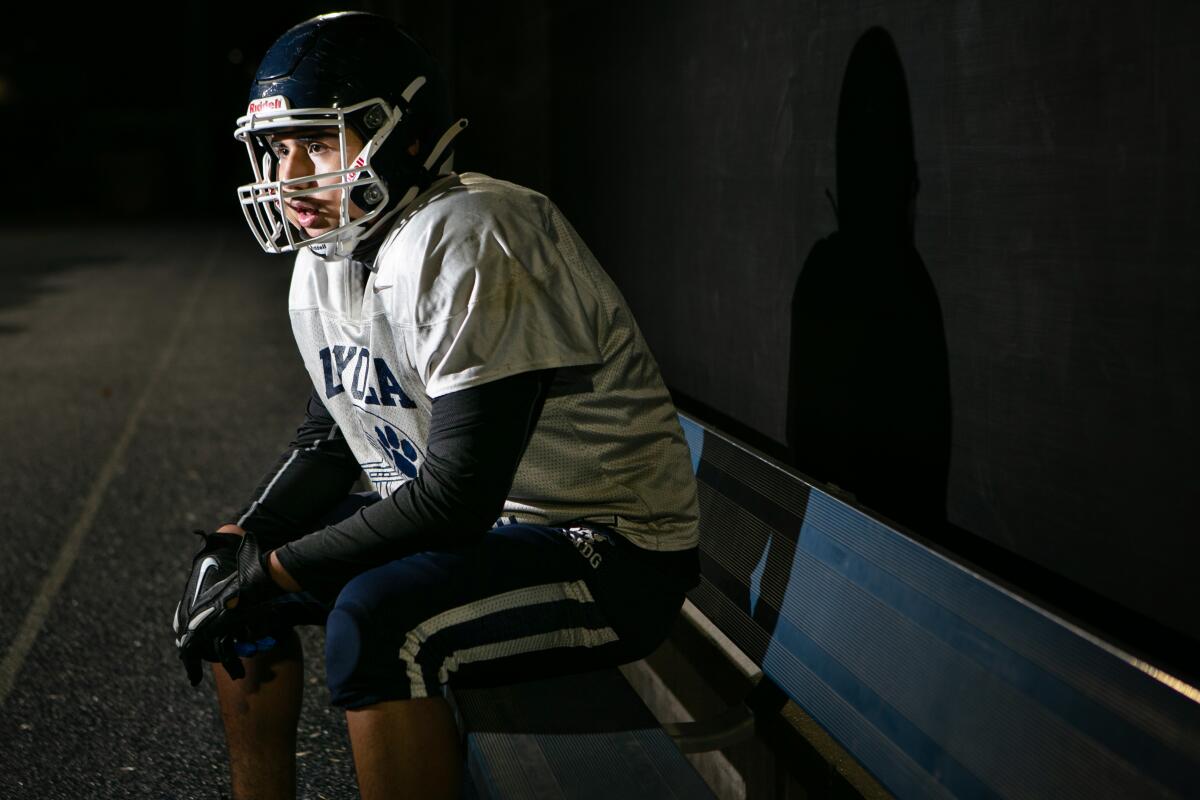
Billy IRL
Schneider Godfrey, a transfer student at Cal Poly Pomona, didn’t have many friends at school, but when she felt sad or lonely, she always knew where to turn: Billy, the school’s artificial intelligence chatbot.
California State University campuses launched robots like Billy in 2019 to help students stay on track to graduate with an easy-to-use texting system. But the bots evolved during the pandemic, my colleague Nina Agrawal reports.
With students longing for personal connection, the bots became buddies and counselors. They sent friendly GIFs and messages filled with emojis. They offer encouragement, send gentle reminders and answer simple questions. If Billy is stumped by a student’s request, he sends the request to a human for backup.
After Godfrey got sick with COVID-19 last semester, she texted Billy, who informed Zoe Lance, one of the humans behind the robot. Lance spoke to Godfrey’s professors on her behalf, set her up with a Grubhub gift certificate and helped her apply for a $500 emergency grant.
“Through Billy I really got the help that I needed,” Godfrey said.
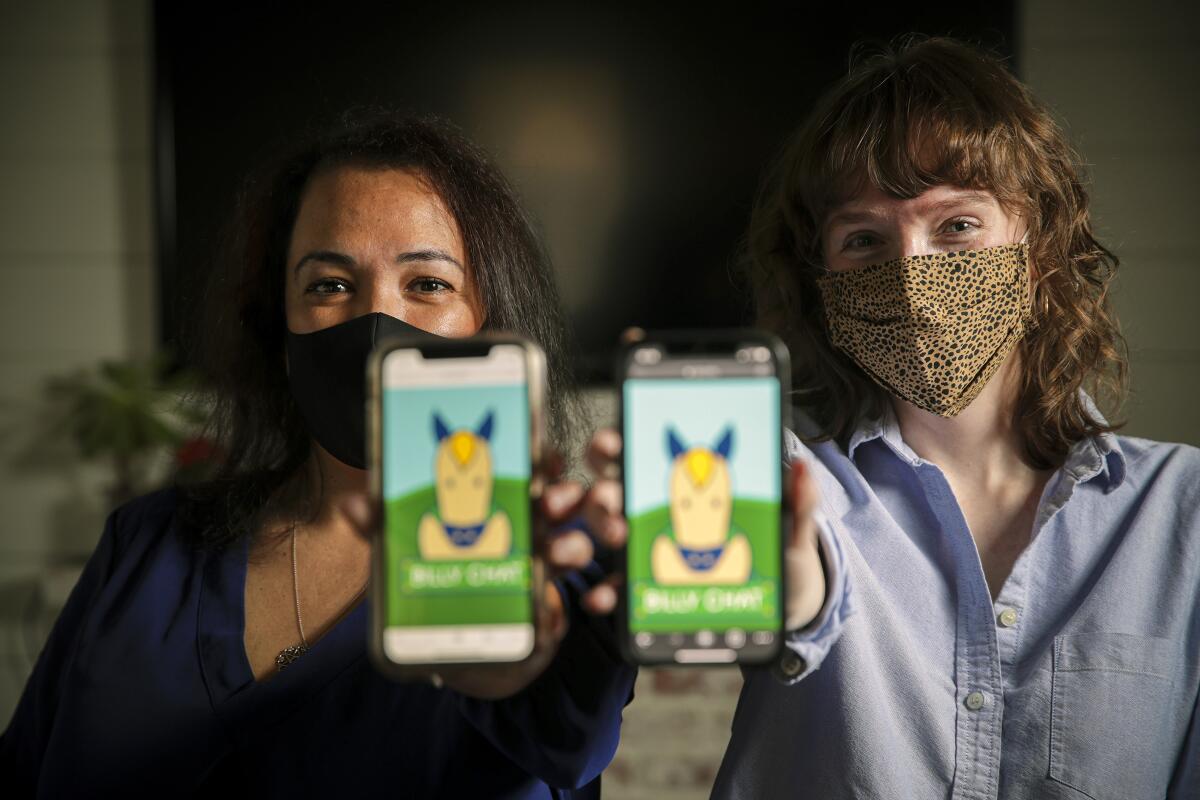
‘Too early until it’s too late’
Maria Apolonia Mandujanu was sitting in the emergency department COVID-19 ward at Providence St. Joseph Hospital when Dr. Brian Boyd started peppering her with questions. His voice was gentle, but his words were frightening.
Would the 53-year-old homemaker who came to the hospital with a four-day headache and burning in her nose want shock paddles if her heart stopped? Would she want chest compressions?
Her husband Arturo, a disembodied head on an iPad screen, didn’t think this was the right time for this kind of talk. His wife had tested positive for the coronavirus just one day before. The problem with these conversations though, is that “it’s always too early. Until it’s too late,” Boyd said.
Boyd leads the palliative care department at St. Joseph in Orange. The hospital had been considering making these conversations a routine part of emergency care; the pandemic accelerated the plan, my colleague Maria L. La Ganga reports.
Mandujanu started to cry while confronting the scary possibilities. Boyd rubbed her arm to comfort her.
“I don’t want to make you upset,” he said. “What do you feel right now?”
“Scared,” she responded.
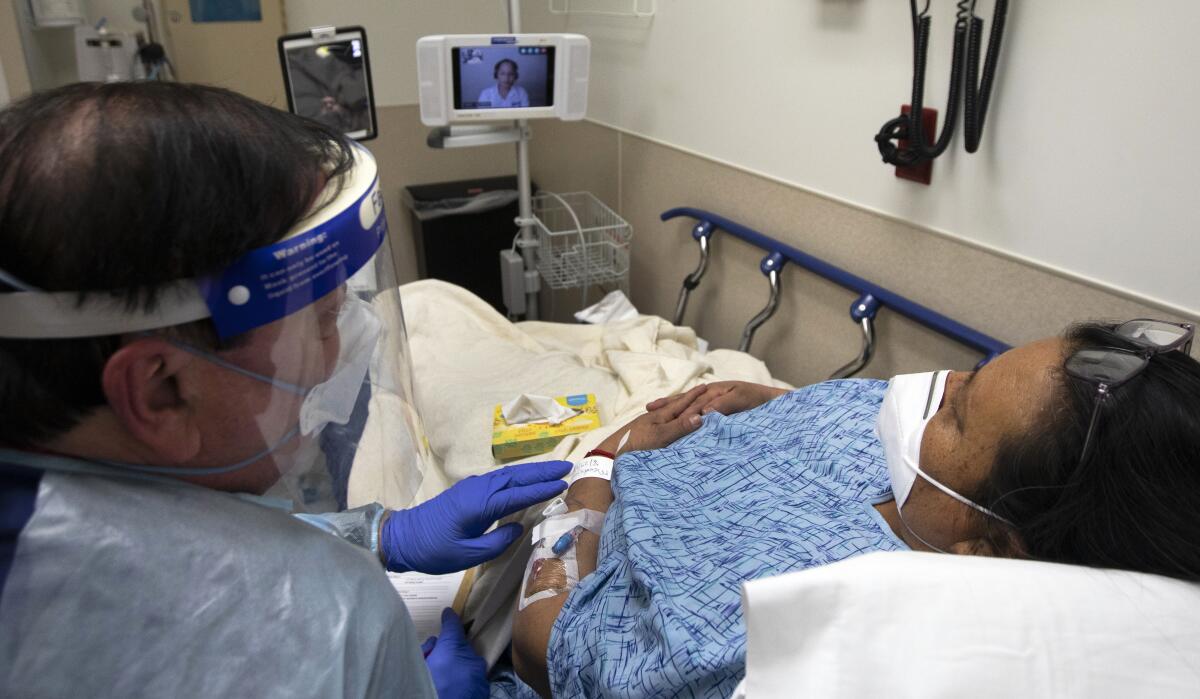
Snowbirds or vaccine vultures?
The sign in Quartzsite, Ariz., reads “Welcome Back Winter visitors.” Not everyone in the desert town is happy about rolling out the red carpet though.
Snowbirds — seasonal visitors to warm-weather states like Arizona and Florida — are usually welcomed as a boon to local economies. But this year, they’re draining the already short supply of COVID-19 vaccines from locals, my colleague Kurtis Lee reports.
In Arizona, people 55 and older are eligible to get vaccinated even if they’re not permanent residents. Even “temporary” residents from Canada can receive a dose.
So 76-year-old Janet Cron — who owns a soy farm in Flaxton, N.D., and drives to Arizona for the winter — signed up for the Moderna vaccine. Meanwhile, John Lane, a 68-year-old year-round resident of Quartzsite who works at a dollar store, doesn’t have time to maneuver the county website for an appointment. He hopes that with spring approaching, winter visitors will return to their other homes and it’ll be easier to find a dose then.
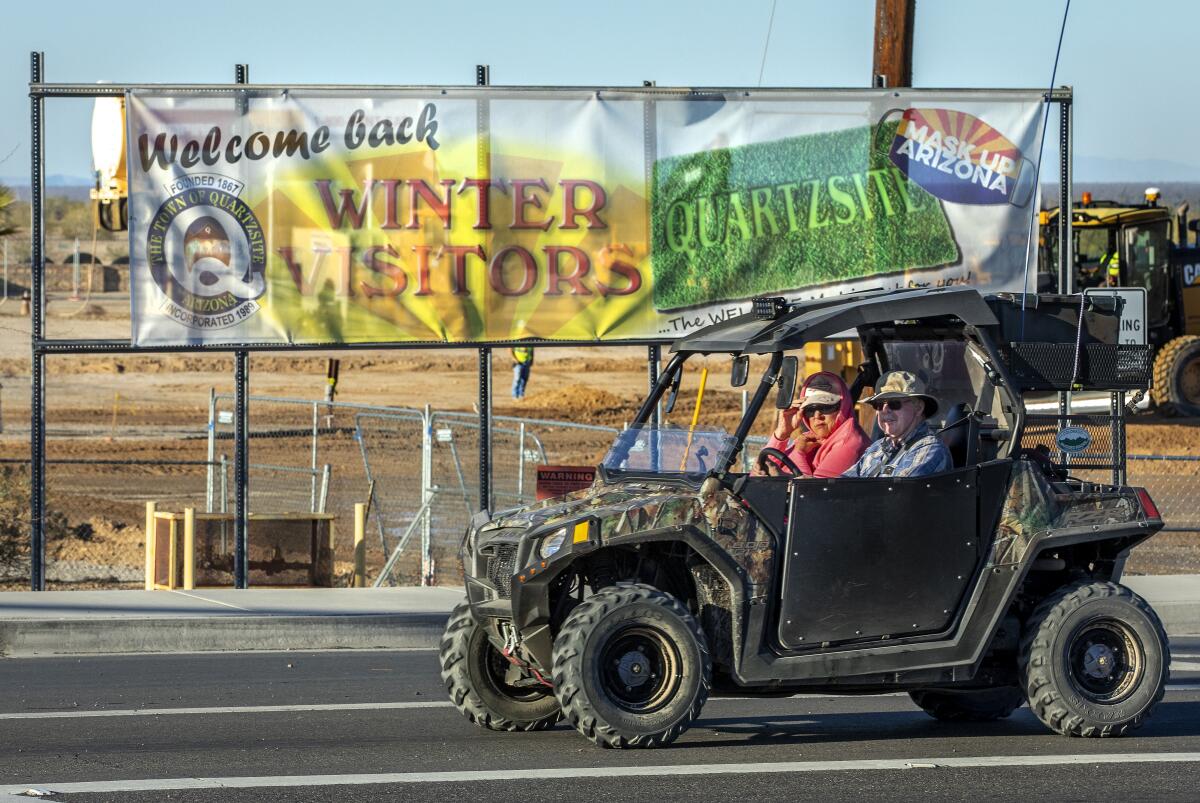
‘It feels like a second-class shot’
Health officials say the Johnson & Johnson shot is a “game-changer.” But some see it as a reminder of the inequities that have always plagued us, columnist Erika D. Smith writes.
The one-dose J&J shot is easier to administer than two-shot rivals from Pfizer and Moderna, and it doesn’t need to be stored at freezing temperatures. Still, confusion about efficacy rates and concern that the J&J vaccine will be primarily sent to poor Black and Latino neighborhoods have fueled suspicions.
“It just doesn’t feel like it is the best shot,” said Corey Matthews, chief operating officer of Community Coalition, who has been going door-to-door to book vaccine appointments for people in South L.A. “It feels like a second-class shot.”
In an effort to counter that impression, five of California’s top doctors in state government were inoculated with the J&J vaccine in front of cameras this week. Dr. Mark Ghaly, the California health and human services secretary, received his dose at the Baldwin Hills Crenshaw Plaza mall.
“Any vaccine that you have a chance to get is the right vaccine for you,” he said.
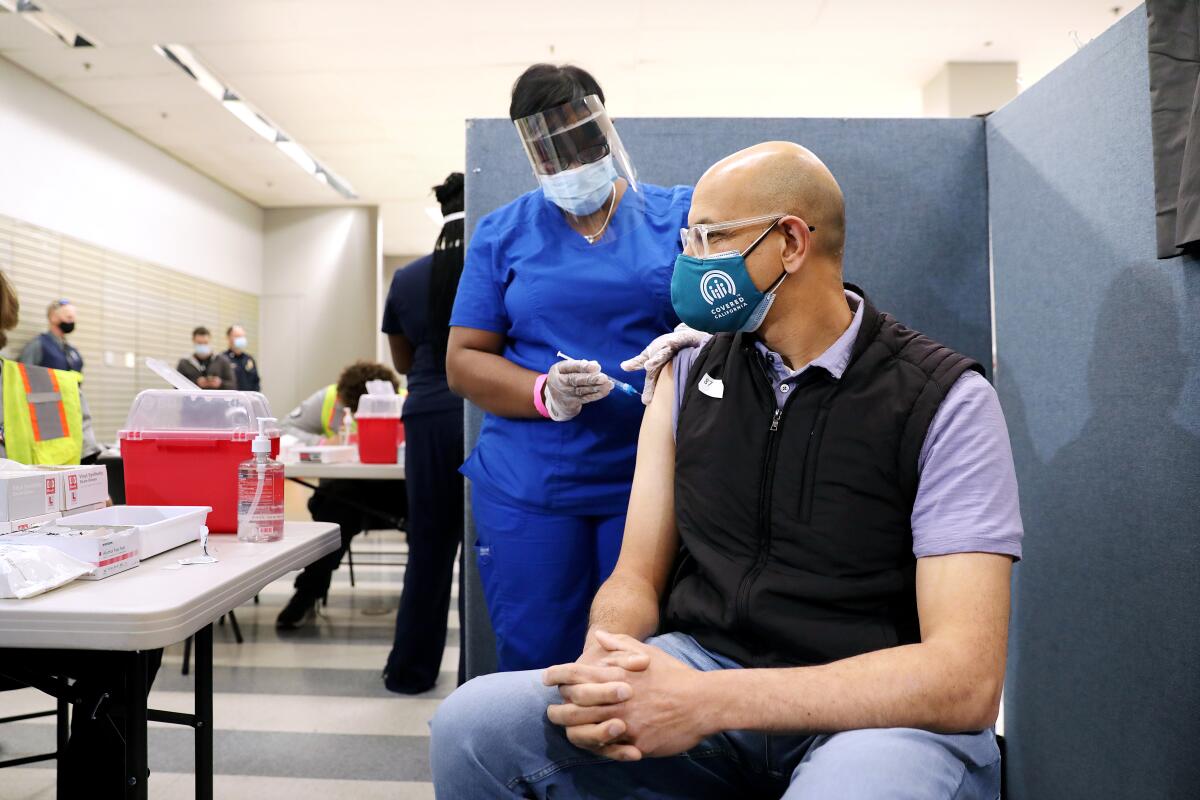
Your support helps us deliver the news that matters most.
What to do this weekend
Get outside. Find your perfect hike with Mary Forgione’s ultimate guide that includes the 50 best hikes in L.A. If you need an energy boost to make it up the hill, let Andrea Chang’s sandwich recommendations help you pick the right on-the-go meal. Subscribe to The Wild for more on the outdoors and our Escapes newsletter for travel ideas.
Watch something great. Our weekend culture watch list includes Sunday’s Grammy Awards, which “The Daily Show’s” Trevor Noah will host from Staples Center. Beyoncé leads the field with nine nominations. And in his Indie Focus newsletter‘s roundup of new movies, Mark Olsen spotlights a short film from Spanish filmmaker Pedro Almodóvar, who makes his English-language debut with “The Human Voice,” starring Tilda Swinton.
Eat something great. Let Ben Mims do the meal planning for you in his new “Week of Meals” series, where he provides five easy-to-prepare weeknight dinners with ingredients gathered in one shopping trip. Each meal comes together in less than an hour, and this week’s menu starts with spiced rice and fish with minty peas. For more, subscribe to our Cooking newsletter and our restaurants critics’ Tasting Notes newsletter.
Go online. Here’s The Times’ guide to the internet for when you’re looking for information on self-care, feel like learning something new or interesting, or want to expand your entertainment horizons.
The pandemic in pictures
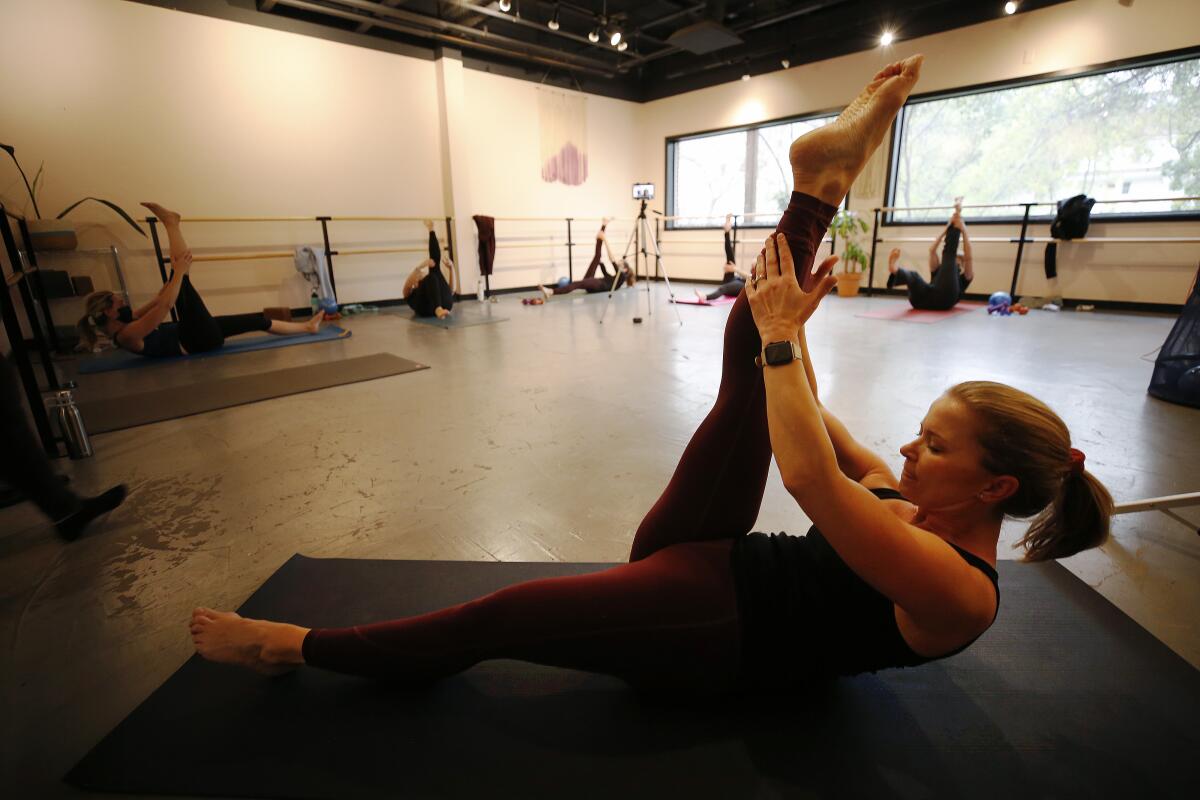
It’s not normal, but it’s a start.
After San Luis Obispo County moved to the red tier last week, allowing the resumption of certain indoor activities, members of Martina Knight’s Barre class stretched on mats that were spaced out in the SLO Yoga Center in downtown San Luis Obispo. Students — fewer than normal — wore masks. A smartphone perched on a tripod stood in the middle of the room; online instruction isn’t going anywhere soon.
With L.A., Orange and San Bernardino counties among those preparing to enter the red tier on Sunday, photographers Al Seib and Josh Edeleson offer us a glimpse of what lies ahead with a look at counties that have already made the jump.
Resources
Need a vaccine? Keep in mind that supplies are limited, and getting one can be a challenge. Sign up for email updates, check your eligibility and, if you’re eligible, make an appointment where you live: City of Los Angeles | Los Angeles County | Kern County | Orange County | Riverside County | San Bernardino County | San Diego County | San Luis Obispo County | Santa Barbara County | Ventura County
Practice social distancing using these tips, and wear a mask or two.
Watch for symptoms such as fever, cough, shortness of breath, chills, shaking with chills, muscle pain, headache, sore throat and loss of taste or smell. Here’s what to look for and when.
Need to get tested? Here’s where you can in L.A. County and around California.
Americans are hurting in many ways. We have advice for helping kids cope, resources for people experiencing domestic abuse and a newsletter to help you make ends meet.
We’ve answered hundreds of readers’ questions. Explore them in our archive here.
For our most up-to-date coverage, visit our homepage and our Health section, get our breaking news alerts, and follow us on Twitter and Instagram.





